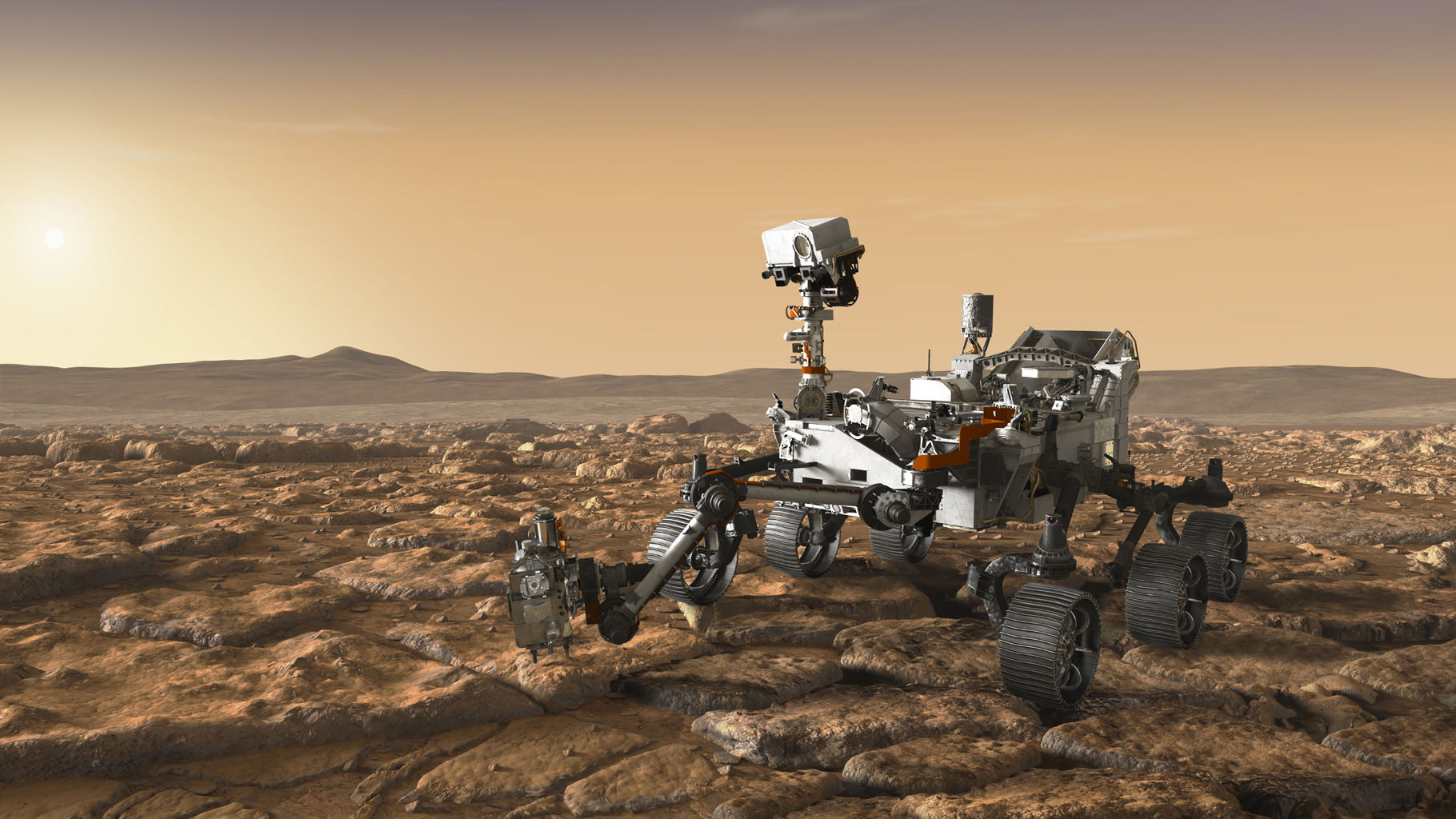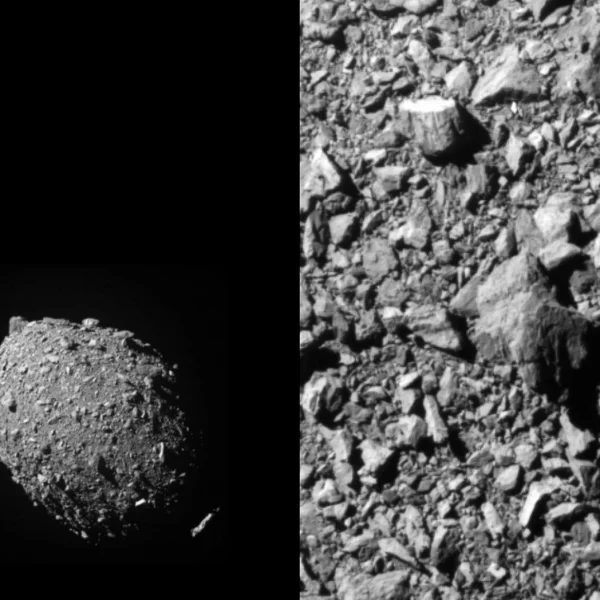Perseverance Rover’s New Findings: Life on Mars!
An intriguing new finding has been made by the Perseverance rover on Mars. It has discovered the chemical components necessary for life in a sample taken from an area of the Jezero crater where there was previously an abundance of liquid water. While not definitive evidence that life ever existed on the planet, the presence of organic molecules indicates that it was at least possible for life to flourish there millions of years ago.

As part of its exploration of Jezero Crater on Mars, NASA’s Perseverance rover uses its robotic arm to examine the area near Skinner Ridge.
The robotic arm of the NASA rover Perseverance explores the area surrounding Skinner Ridge, a rocky outcrop in Jezero Crater on Mars. This mosaic is composed of many photos and depicts sedimentary rocks in layers along the face of a cliff in the delta, as well as one of the spots where the rover abraded a circular area to determine the composition of the rock. NASA/JPL-Caltech/ASU/MSSS
While investigating the Jezero river delta, the Perseverance rover has been collecting samples for its second scientific campaign (the first science campaign included examining the Jezero crater bottom). The rover gathered an intriguing sample on July 20 from Wildcat Ridge, a three-foot-wide outcrop of granite.
Perseverance’s SHERLOC (Scanning Habitable Environments with Raman & Luminescence for Organics & Chemicals) equipment was used to analyze the Wildcat sample, and the presence of organic compounds was confirmed. These molecules were detected in sedimentary rock near sulphate minerals that develop in water, which is consistent with prior discoveries of these building blocks of life by the Curiosity rover in the Gale Crater on Mars.
Dr. Ken Farley, a scientist working on the Perseverance project, stated in a statement that the sand, mud, and salts that make up the Wildcat Ridge sample were deposited in the past under circumstances where life may have theoretically flourished. “It’s significant since the organic stuff was discovered in a sedimentary rock, which is well-known for retaining fossils of Earth’s past life. Despite the sophistication of the sensors on board Perseverance, scientists won’t be able to draw any firm conclusions about the Wildcat Ridge sample’s composition until it is brought back to Earth and analyzed in further detail as part of the agency’s Mars Sample Return campaign.”
As part of its Mars Sample Return mission, which is scheduled for the 2030s, NASA plans to return the samples obtained by Perseverance back to Earth for in-depth examination.
Laurie Leshin, director of NASA’s Jet Propulsion Laboratory, stated, “I have researched Martian habitability and geology for most of my career, and I know firsthand the great scientific value of returning a properly gathered collection of Mars rocks to Earth.” It’s incredible that in a matter of weeks we’ll be able to deploy Perseverance and bring back some of its interesting samples for scientists to analyze in fine detail on Earth. There’s going to be a lot of new information for us to digest.











